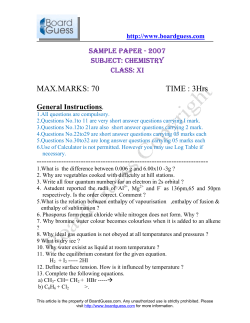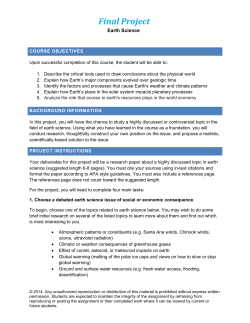
Queuing Theory - Introduction
ITARC 2009
Web application
performance analysis
Rajesh Chellamani
Principal Architect,
CT, a Wolters Kluwer Business
The use, disclosure, reproduction, modification, transfer, or transmittal of this work without the written permission of IASA is strictly prohibited. © IASA 2009
Agenda
Introduction
Performance analysis scenarios
Prerequisites
Queuing Theory Introduction
Queuing theory application
Application architecture evaluation
Challenges
Conclusion
Reference
The use, disclosure, reproduction, modification, transfer, or transmittal of this work without the written permission of IASA is strictly prohibited. © IASA 2009
ITARC 2009
INTRODUCTION
The use, disclosure, reproduction, modification, transfer, or transmittal of this work without the written permission of IASA is strictly prohibited. © IASA 2009
Introduction
What is system performance analysis?
Response time
Resource utilization
The use, disclosure, reproduction, modification, transfer, or transmittal of this work without the written permission of IASA is strictly prohibited. © IASA 2009
Performance analysis scenarios
Production system experiencing performance issues
Performance analysis of application architecture
Identify potential performance issues early in application
development process
Capacity planning
What is the maximum load level supported by the current
server configuration?
Server consolidation and hardware specification determination
The use, disclosure, reproduction, modification, transfer, or transmittal of this work without the written permission of IASA is strictly prohibited. © IASA 2009
ITARC 2009
QUEUING THEORY
Basics of queuing theory
The use, disclosure, reproduction, modification, transfer, or transmittal of this work without the written permission of IASA is strictly prohibited. © IASA 2009
Queuing Theory - Introduction
Simple method to analyze ways to analyze system performance
using mathematical models
Very generic – applicable in many analysis situations that involve
“customers” and “service centers”
Naming convention: uses Kendall Notation. Contains 5 parts
Input arrival type: Probabilistic (memory-less), General …
Service time: Probabilistic (memory-less), General …
Number of service points: 1, m, …
Queue depth: 1, m …
Algorithm: FIFO, LIFO …
Example: M/M/1, M/M/m
The use, disclosure, reproduction, modification, transfer, or transmittal of this work without the written permission of IASA is strictly prohibited. © IASA 2009
Example of Queues
The use, disclosure, reproduction, modification, transfer, or transmittal of this work without the written permission of IASA is strictly prohibited. © IASA 2009
ITARC 2009
QUEUING THEORY
Application Performance Analysis
The use, disclosure, reproduction, modification, transfer, or transmittal of this work without the written permission of IASA is strictly prohibited. © IASA 2009
Database resource utilization
model
High CPU usage in production
Decision: Hardware upgrade
Add more CPU – add 2 more or 4 more CPUs?
Add more memory
Process
Challenges
The use, disclosure, reproduction, modification, transfer, or transmittal of this work without the written permission of IASA is strictly prohibited. © IASA 2009
Modeling database performance
0.25
0.2
0.15
Response secs
% improvement
0.1
0.05
0
6 7 8 9 10 11 12 13 14 15 16 17 18 19 20 21 22 23 24 25
The use, disclosure, reproduction, modification, transfer, or transmittal of this work without the written permission of IASA is strictly prohibited. © IASA 2009
Model creation process
Define the objectives
Identify the system and queues
Identify the parameters
Define/Select an existing model
Iteration 1: Choose existing M/M/m model
Iteration 2: Create a new model
Validate the model
Predict and repeat measurement and validation
The use, disclosure, reproduction, modification, transfer, or transmittal of this work without the written permission of IASA is strictly prohibited. © IASA 2009
Steps in custom model creation
Step1: Analyze request pattern, average response time and DB
processor utilization of the current system
Step2: Workload characterization for the DB server
Step3: Document the system configuration, tools used and
assumptions in the model
Step4: Create a simple model by analyzing the current system
DB Response time = Time spent processing request + (Disk IO
time + Memory IO time)
The use, disclosure, reproduction, modification, transfer, or transmittal of this work without the written permission of IASA is strictly prohibited. © IASA 2009
Custom model creation
Objective: Determine the CPU usage in the database server after
hardware (HW) upgrade
Analyze server logs to confirm that Oracle process is the most
active
Eliminate any external factors influencing performance.
User CPU + System (kernel mode) CPU time represents the
request processing time
Disk 1
Disk 2
User CPU
Memory
Queuing model to study impact of adding processor and memory to database server
The use, disclosure, reproduction, modification, transfer, or transmittal of this work without the written permission of IASA is strictly prohibited. © IASA 2009
Definition of model parameters
t: time after hardware upgrade
t-1: time before hardware upgrade
Cu(t-1): User CPU at time (t-1)
Cu(t): User CPU utilization at time t
Cs(t-1): system CPU at time (t-1)
p(t): Number of CPUs at time t,
p(t-1): Number of CPUs at time (t-1)
M(t): Memory at time t
M(t-1): Memory at time t-1
The use, disclosure, reproduction, modification, transfer, or transmittal of this work without the written permission of IASA is strictly prohibited. © IASA 2009
Definition (cont)
d: Fraction of additional CPU at time t
a: data fetch efficiency. Assumed a constant of
0.15 (i.e system cpu at time t-1)
g: Additional CPU available due to adding more
memory
The use, disclosure, reproduction, modification, transfer, or transmittal of this work without the written permission of IASA is strictly prohibited. © IASA 2009
Custom model: conclusion
More CPU available for processing request
As per this model, if γ = 0.15, δ = 1.66 and Cs(t-1) = 15%, Cu(t) will
improve by 38.37%
Observed improvement after hardware upgrade was 60%
improvement
Additional 20% attributed to redesigning a resource intensive
application model
The use, disclosure, reproduction, modification, transfer, or transmittal of this work without the written permission of IASA is strictly prohibited. © IASA 2009
Application performance
evaluation- Preparation
Instrumentation framework
Requires historic data for database and web server performance
Application system dependency
Steady state performance profile
Database
Web services and applications
NAS/SAN storage
Document typical performance numbers for application
components
The use, disclosure, reproduction, modification, transfer, or transmittal of this work without the written permission of IASA is strictly prohibited. © IASA 2009
Application architecture
evaluation (cont)
Waterfall SDLC process
Produce existing usage profile of existing applications
Define application performance requirements and goals
Acceptable response time
Acceptable resource utilization
Document typical response time based on existing
implementation
Assign performance quotas
Adjust for errors/unknowns
The use, disclosure, reproduction, modification, transfer, or transmittal of this work without the written permission of IASA is strictly prohibited. © IASA 2009
Application architecture
evaluation (cont)
Create a component inventory
Analyze and document component dependency tree
Performance quota allocation
Identify potential performance bottlenecks
Redesign if required and repeat the process
The use, disclosure, reproduction, modification, transfer, or transmittal of this work without the written permission of IASA is strictly prohibited. © IASA 2009
ITARC 2009
CONCLUSION
The use, disclosure, reproduction, modification, transfer, or transmittal of this work without the written permission of IASA is strictly prohibited. © IASA 2009
Challenges
Business justification
Frequent upgrade to applications changes response time and
resource utilization profile
Infrastructure changes
Other factors
Performance testing
Environment differences
The use, disclosure, reproduction, modification, transfer, or transmittal of this work without the written permission of IASA is strictly prohibited. © IASA 2009
Conclusion
Keep the model simple
Re-evaluate the model periodically
Performance testing – certify applications on a hardware setup of
lower capacity than the production servers
Define performance buffers
The use, disclosure, reproduction, modification, transfer, or transmittal of this work without the written permission of IASA is strictly prohibited. © IASA 2009
References
Guerilla Capacity Planning – Neil J. Gunther, Springer
Publications, www.perfdynamics.com
A short introduction to queuing theory – Andreas Willig,
Technical University Berlin, Network Telecommunication
Group, http://www.tkn.tu-berlin.de/curricula/ws0203/uekn/qt.pdf
Quantitative System Performance: Computer System Analysis
Using Queueing Network Models: Edward Lazowska, John
Zahorjan, G. Scott Graham, Kenneth C. Sevcik
(http://www.cs.washington.edu/homes/lazowska/qsp/)
Developing and Applying a Distributed Systems Performance
Approach for a Web Platform – James Cusick and Terry Welch,
C T Corporation, {James.cusick,
Terry.welch}@wolterskluwer.com
The use, disclosure, reproduction, modification, transfer, or transmittal of this work without the written permission of IASA is strictly prohibited. © IASA 2009
Questions?
The use, disclosure, reproduction, modification, transfer, or transmittal of this work without the written permission of IASA is strictly prohibited. © IASA 2009
© Copyright 2025









